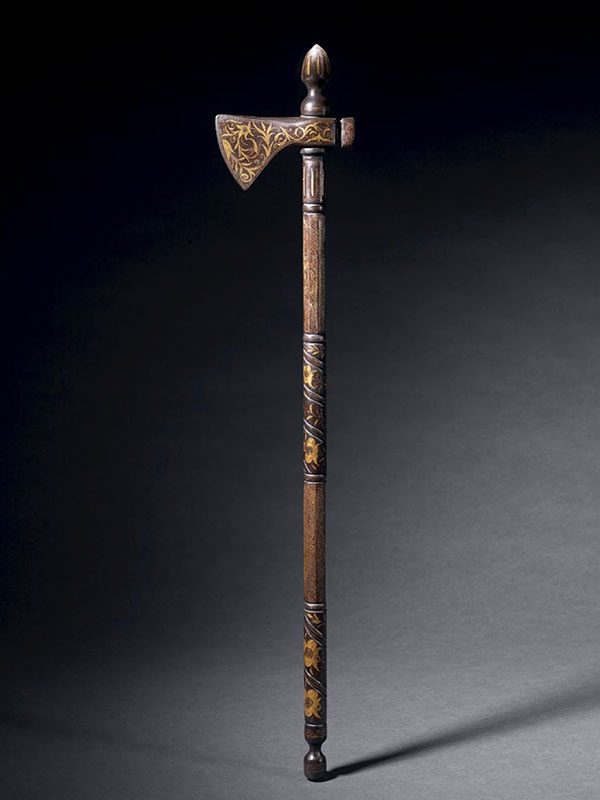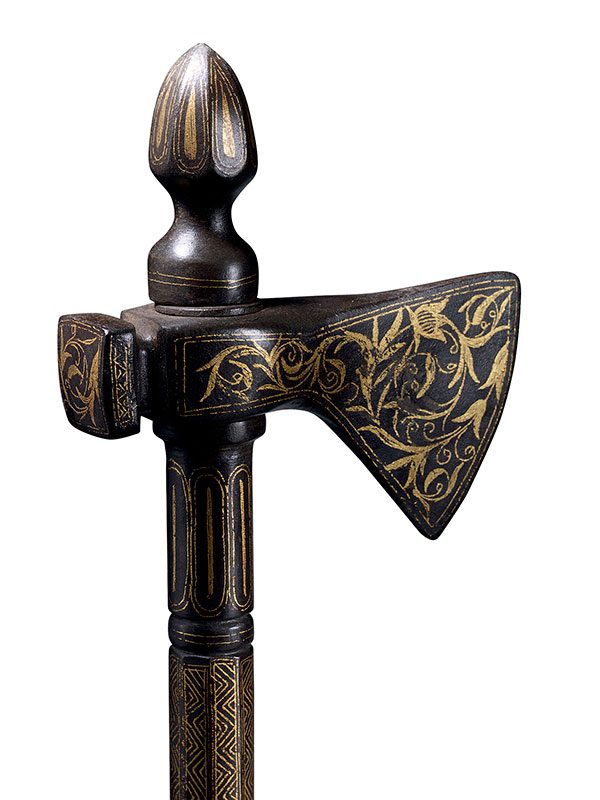Ceremonial gold-damascened steel axe (tabarzin)
A steel axe (tabarzin) made in two parts. The axe is decorated overall with inlaid damascened gold in the koftgari technique. The elegantly shaped axe-head is curved and decorated with scrolling flower patterns on both sides. A small flat hammer opposite the axe blade is decorated with a scrolling flower and zigzag design on its sides. The separately made shaft is faceted in parts and terminates in a bulbous-shaped end section. The shaft is decorated with a geometric and scrolling flower pattern all over.
The technique used to decorate this axe is known as koftgari, a term that originates from Persian, meaning ‘gilder’ or ‘gold beater’. This technique involves etching out a pattern on steel and laying pure gold wire on top of the etched line. The wire is then hammered into the metal, according to the pattern. The piece is heated and hammered again, after which the surface is polished with porous stone. The technique was particularly popular in Iran and India during the 17th – 19th centuries and was commonly used to decorate arms and armour.[1] The floral decoration on the present axe is typical of Indian metalwork and can be compared to that seen on bidri wares.[2] A comparable Indian steel axe can be found in the Khalili collection.[3]
- Elgood, R., Firearms of the Islamic World, London, 1995, no. 94b, p. 148. Also: Skelton, R., The Indian Heritage, Court Life and Arts under Mughal Rule, London, Victoria and Albert Museum, 1982, no. 468, p. 140
- Zebrowski, M., Gold, Silver & Bronze from Mughal India, London, 1997, nos. 495-508, pp. 296-304
- Alexander, D, The Nasser D. Khalili Collection Of Islamic Art, Volume XXI, no. 111, pp. 178-179


